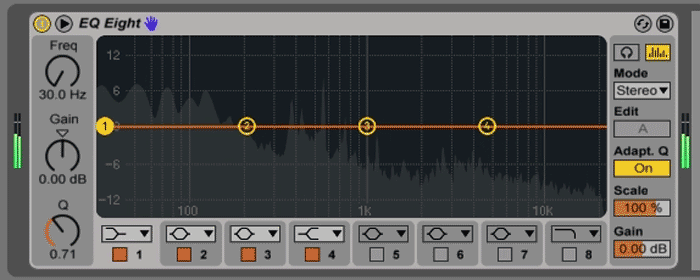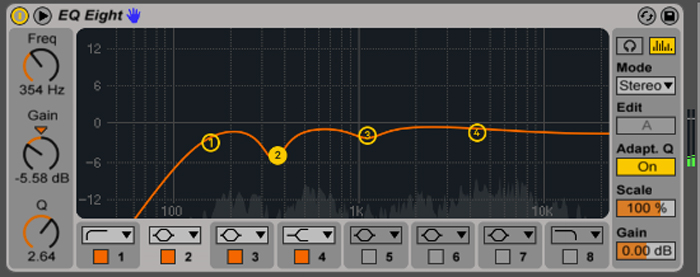One of the most common complaints from people new to mixing is, “my mix sounds muddy.”
It is frustrating—muddy sound means a lack of clarity and definition with poor separation among instruments.
In this article, I will go through the most common causes of a muddy mix and the way to keep away from them in 5 steps.
EQ issues
Muddiness is an EQ factor!
EQ is a giant subject in audio production. When you are not sure about the fundamentals, earn more about EQ here.
All of the sounds you use in your DAW session have power in different parts of the frequency spectrum.
Whether they come from your sample packs, VSTs or microphones, many of your sounds have info in the low frequencies even if they aren’t bass instruments.
Muddiness is caused by too many different sources piling up and masking each other in the critical bass and low midrange areas.
1. Get it right at the source
Your first line of defense against a muddy mixing begins before the mixing process.
There are a cause experienced engineers swear by “getting it right the source.” When you begin with tracks that already sound great, your mix process will be much smoother.
Keep away from muddiness early by controlling the low frequencies with the instruments you have right at the source.
For instance, you could have noticed some microphones have a switch on them to roll off low frequencies. Engage it when you are tracking a particularly bassy source, or when you are dealing with issues caused by proximity effect.
In case your sounds are coming from samples or synths already inside your DAW, controlling your bass is even simpler.
Edit your synth patches as you work utilizing the built-in filters so that your low end is not overwhelming other parts of your track.
2. Manage your low end in the stereo field
Keep a stereo position in mind as you deal with the low end in your tracks.
Foundational sources like kick and bass should nearly always be mono. Phase issues created by stereo effects on these sounds could cause issues in your low end.
You should also be careful about making a bass imbalance between the left and right speakers as you pan the rest of your tracks in the stereo field.
The lopsided low end could be distracting and contribute to a sense of muddiness. Balance things out and sculpt with EQ where essential.
3. Don’t be afraid to filter
When you have tracks with extra low end, deal with them utilizing high pass filters.
The steep drop off around the corner frequency of a high pass filter (sometimes called a low cut filter) is good for removing low-frequency info that is muddying up the mix.
You could be surprised how much low end you could filter out before your sound begins to suffer.
When you have a lot of lows beginning to pile up, locate the main offenders and see how far up you could improve the frequency of your high pass filters to create space.
You may be able to minimize more than you think!
Hot tip: Use an EQ with a visual display of the spectrum that will help you see which tracks are contributing the most to excessive low end. Think about cleaning things up If there is lots of activity under 50 Hz.
Power in this low region of the spectrum could cause your speakers to strain, since they could not reproduce it accurately.
Relying on the visual feedback of an EQ plugin could affect your mixing decisions. Ensure to always use your ears first.
4. Be extra-careful EQing your low mids
Tight bass is essential for clarity in your mix, however, the most significant source of muddiness is your low mids.
I’m talking about the range from 200 to 500 Hz. Many of the sounds you work within your mix have power in this area.
When you do not pay attention to carving out space in the low mids, you will end up with muddy, indistinct lows.
Decide which sources will occupy this space and clear things out in the other tracks to create space.
5. Keep good headroom
Headroom is in necessary concept in audio.
Maintaining headroom is a great habit in general, however, it could also help you reduce muddiness. Hot levels at the master bus could cause issues with clarity and separation.
Pay attention to the gain staging throughout your session and goal for an average level of -18 dBFS with peaks around 9-10 dBFS.
Postmudernism
No one wants a muddy sounding track. Muddy mixes are flat, unprofessional and will not do your songs justice.
Fortunately, It’s simple to keep away from muddiness if you realize the causes and the way to fix them. Follow these steps to make sure that you never have to deal with a lack of clarity again.
Now that you know the way to deal with your lows and low mids, get back to your mix and clear away the mud.



